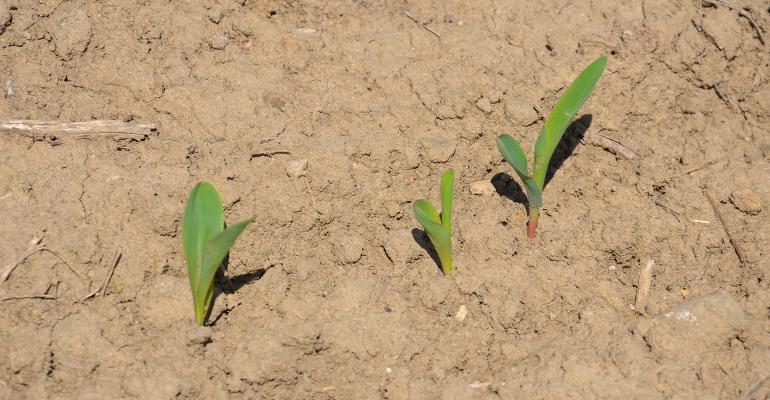Seed treatments for corn nematodes available

Corn Pest Beat: There is minimal third-party data on nematode products in corn.
Jan 03, 2019
Some companies talk about controlling corn nematodes. Is there data that shows a yield increase by including such products? My farm averaged over 200 bushels per acre. I can’t believe nematodes are hurting much. What do you think?
The Indiana certified crop advisers panel answering this question includes Andy Like, Syngenta sales rep, Vincennes; Jeff Nagel, agronomist with Ceres Solutions LLP, Lafayette; and Darrell Shemwell, agronomist with Posey County Co-op, Poseyville.
Like: Nematodes could be hurting your yields significantly. Nematode pressure isn’t uniform across the Corn Belt. There are local areas that have significant damage where treating shows a benefit and other areas where pressure is minimal. I would certainly run strip trials and see what kind of response you get from these new treatments before going all in.
Nagel: There isn’t a lot of current research on population levels of the various “endo,” or internal, and “ecto,” or external, corn nematodes. Certainly, elevated numbers can cause yield losses, but few farmers actually test for corn nematodes to know types and levels. Older soil-applied insecticides like Counter that had some nematicide properties are rarely used today. Neonicotinoid seed treatments don’t control nematodes.
Root feeding from corn nematodes can cause stunting and poor growth. Symptoms can be overlooked and attributed to other factors.
In 2013, Ceres Solutions collaborated with nematology specialists at Purdue University. Interns pulled corn nematode samples when tissue testing at V5 to V6. Many were corn after soybean fields. Samples from 301 fields were analyzed and results were surprising. Lance, lesion, dagger, needle and spiral nematodes were all detected. Lesion was the most common type. The summary showed 37% of samples were rated a 4 — plant parasitic nematodes are causing a problem — and 32% were rated a 3 — plant parasitic nematodes might be causing a problem.
This project suggests that we probably overlook symptoms and damage from corn nematodes and should pull more nematode tests to assess levels. Doing on-farm trials with newer nematode seed treatments may also prove beneficial. Damaging nematode levels are often spotty in fields, so more than one field should be evaluated.
Shemwell: Needle and sting nematodes are more commonly found in sandy soils, whereas lesion and dagger nematodes can be found in any soil type. Fields that may be affected most would be those in continuous corn and no-till systems, and sandy fields.
Seed corn treated with a higher rate of Poncho/VOTiVO with clothianidin at the 0.5 to 1.25 milligrams per seed will offer better protection against nematodes than the basic treatment.
Bayer has reintroduced NemaStrike nematicide for use on corn and soybeans. The company’s research data shows an average yield increase of about 6 bushels per acre in corn and 2.2 bushels per acre in soybeans. I personally haven’t seen the product in the field or seen much local yield data from 2018 to form an opinion. Some seed companies have run their own on-farm tests and show positive returns. We’re going to have on-farm trials in 2019. I would recommend growers who think they may have a nematode problem run check strips to see if there’s a difference. There is a possibility we have been seeing symptoms of nematodes and misdiagnosing those symptoms and putting the blame elsewhere.
Editor’s note: One seed company, Beck’s, added a biological product, Nemasect, to its proprietary Escalate seed treatment and will include it on all corn and soybean products for 2019.

